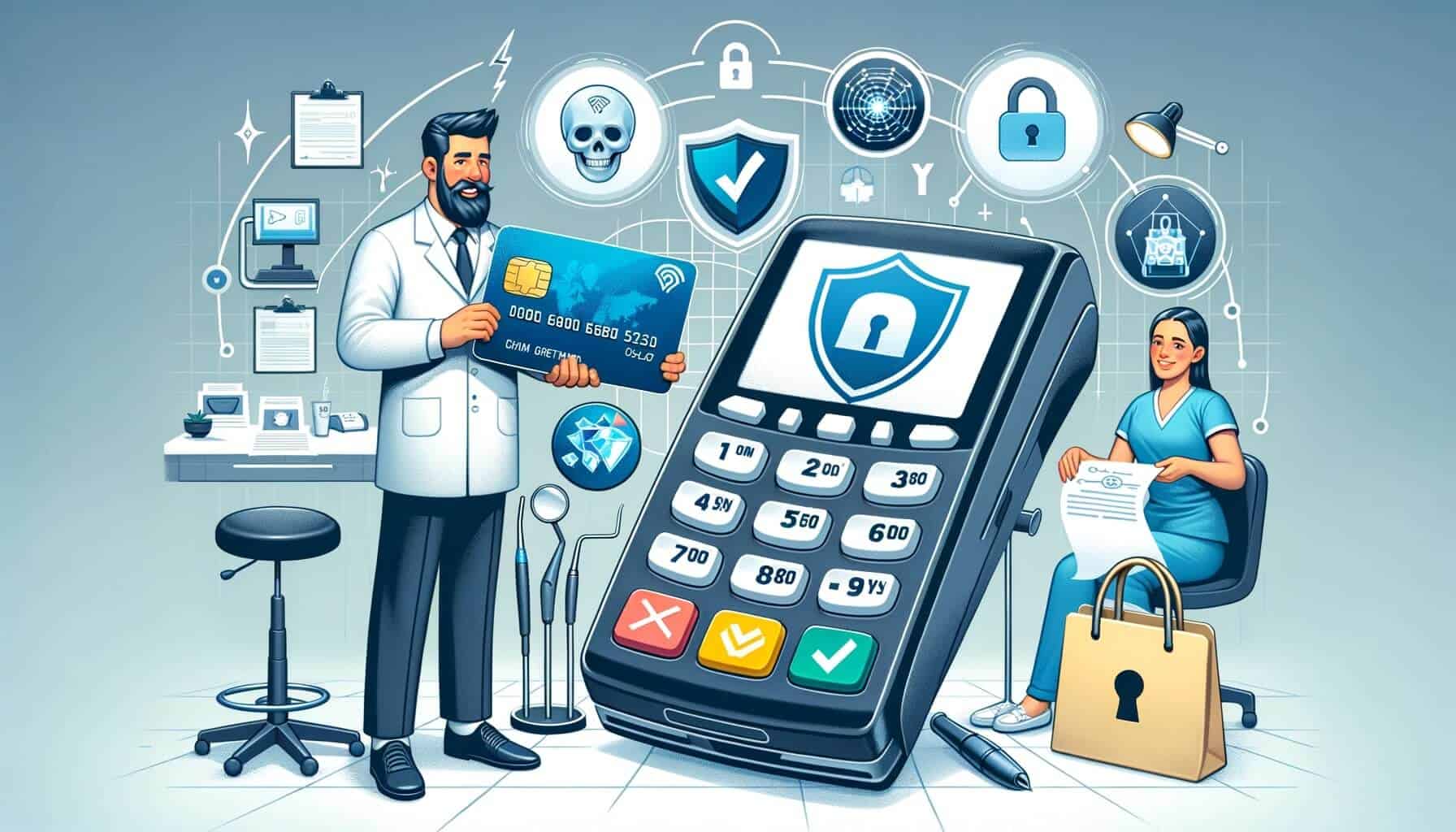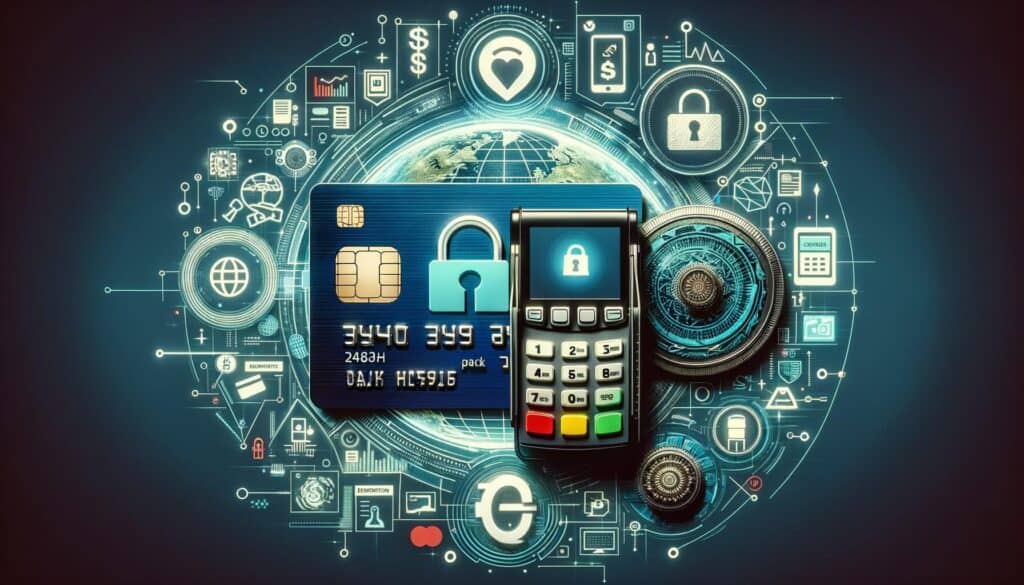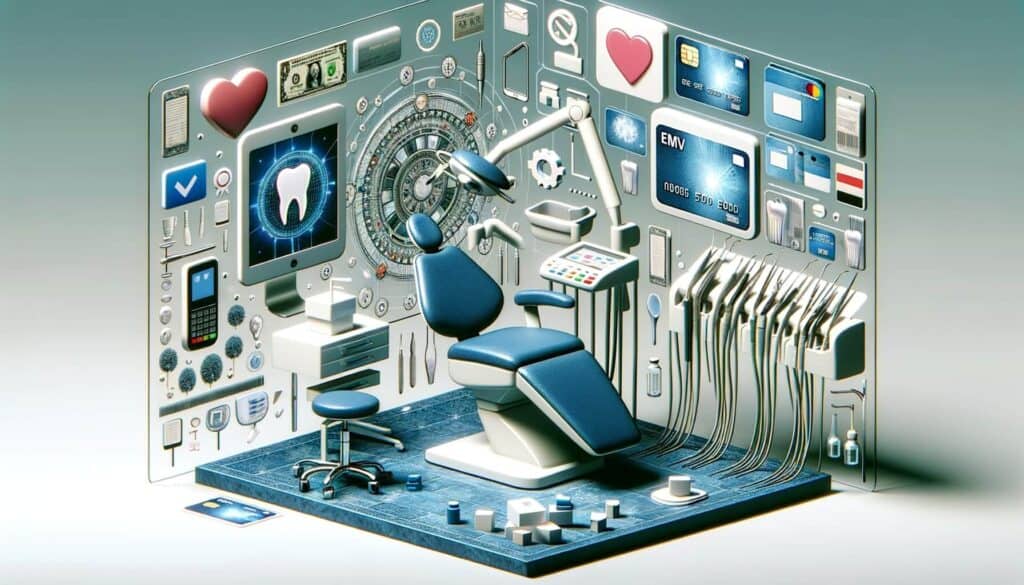
By Crystal Hopkins January 8, 2025
In today’s digital age, the importance of secure payment processing cannot be overstated. Dental practices, like many other businesses, handle sensitive financial information from their patients on a daily basis. With the rise of fraudulent activities and data breaches, it has become crucial for dental practices to adopt advanced technologies that can protect their patients’ payment information. One such technology that has gained significant traction in recent years is EMV (Europay, Mastercard, and Visa) technology.
EMV technology is a global standard for secure payment processing that utilizes embedded microchips in payment cards to authenticate transactions. Unlike traditional magnetic stripe cards, which store static data that can be easily cloned, EMV cards generate a unique transaction code for each payment, making it extremely difficult for fraudsters to replicate or counterfeit. This article will delve into the role of EMV technology in reducing fraud in dental payment processing, exploring its benefits, implementation process, compliance standards, and addressing common concerns and misconceptions.
Understanding EMV Technology and its Benefits

EMV technology revolutionizes the way payment transactions are processed by introducing a more secure and sophisticated method. The key component of EMV technology is the embedded microchip, also known as the EMV chip, which stores and processes data securely. When a patient inserts an EMV card into a compatible payment terminal, the chip generates a unique transaction code that cannot be reused, providing an additional layer of security.
One of the primary benefits of EMV technology is its ability to significantly reduce card-present fraud. According to a report by Visa, countries that have implemented EMV technology have experienced a substantial decline in counterfeit card fraud. In the United States alone, counterfeit card fraud losses dropped by 76% between 2015 and 2018, thanks to the widespread adoption of EMV technology.
Furthermore, EMV technology also protects against lost or stolen card fraud. With traditional magnetic stripe cards, if a card is lost or stolen, it can be easily used by unauthorized individuals. However, with EMV cards, the unique transaction code generated by the chip ensures that even if the card is stolen, it cannot be used for fraudulent transactions.
The Impact of EMV Technology on Reducing Fraud in Dental Payments

The implementation of EMV technology in dental payment processing has had a significant impact on reducing fraud. Dental practices that have adopted EMV technology have witnessed a decline in fraudulent transactions and an increase in customer trust. By utilizing EMV technology, dental practices can protect their patients’ payment information and safeguard their reputation.
One of the key reasons why EMV technology is effective in reducing fraud is its ability to prevent counterfeit card fraud. With the unique transaction codes generated by the EMV chip, fraudsters cannot replicate or clone the card to make fraudulent purchases. This added layer of security makes it extremely difficult for criminals to carry out fraudulent activities using EMV cards.
Implementing EMV Technology in Dental Practices: A Step-by-Step Guide

Implementing EMV technology in dental practices requires careful planning and execution. Here is a step-by-step guide to help dental practices seamlessly transition to EMV payment processing:
1. Assess Current Payment Infrastructure: The first step is to evaluate the existing payment infrastructure in the dental practice. Determine whether the current payment terminals are EMV-compatible or if they need to be upgraded or replaced.
2. Choose an EMV-Compatible Payment Terminal: Select a payment terminal that is EMV-compatible and meets the specific needs of the dental practice. Consider factors such as ease of use, compatibility with practice management software, and additional features like contactless payment options.
3. Train Staff on EMV Technology: Provide comprehensive training to the dental practice staff on how to use the new EMV payment terminals. Ensure that they understand the benefits of EMV technology and how to handle different types of payment cards.
4. Update Practice Management Software: If necessary, update the practice management software to integrate seamlessly with the new EMV payment terminals. This will enable efficient payment processing and streamline the overall workflow.
5. Inform Patients about the Transition: Communicate with patients about the transition to EMV technology and educate them about the enhanced security measures in place. Address any concerns or questions they may have to build trust and confidence.
6. Test and Monitor the System: Before fully implementing EMV technology, conduct thorough testing to ensure that the payment terminals are functioning correctly and securely. Monitor the system regularly to identify any potential issues or vulnerabilities.
EMV Compliance and Security Standards for Dental Payment Processing
To ensure secure dental payment processing, dental practices must comply with EMV standards and security guidelines. Compliance with these standards helps protect both the dental practice and its patients from potential fraud and data breaches. Here are some key compliance and security standards for dental payment processing:
1. EMVCo Specifications: EMVCo is the organization responsible for managing and evolving the EMV specifications. Dental practices must ensure that their payment terminals comply with the latest EMVCo specifications to ensure interoperability and security.
2. Payment Card Industry Data Security Standard (PCI DSS): PCI DSS is a set of security standards designed to protect cardholder data. Dental practices must comply with PCI DSS requirements to ensure the secure handling, processing, and storage of payment card information.
3. Point-to-Point Encryption (P2PE): P2PE is a security measure that encrypts payment card data from the point of entry to the payment processor, preventing unauthorized access to sensitive information. Dental practices should choose payment terminals that support P2PE to enhance security.
4. Tokenization: Tokenization is the process of replacing sensitive payment card data with a unique identifier called a token. Dental practices should implement tokenization to protect cardholder data and reduce the risk of data breaches.
EMV Technology vs. Traditional Magnetic Stripe Cards: A Comparison
To fully understand the benefits of EMV technology in reducing fraud in dental payment processing, it is essential to compare it with traditional magnetic stripe cards. Here are some key differences between EMV technology and traditional magnetic stripe cards:
1. Data Storage: Traditional magnetic stripe cards store static data, including the cardholder’s name, card number, and expiration date. This static data can be easily cloned or skimmed by fraudsters. In contrast, EMV cards store dynamic data that changes with each transaction, making it extremely difficult to replicate or counterfeit.
2. Authentication Process: Traditional magnetic stripe cards rely on a simple swipe and signature process for authentication. This method is vulnerable to fraud as signatures can be forged or stolen. EMV cards, on the other hand, use a more secure authentication process that involves the generation of a unique transaction code for each payment.
3. Liability Shift: With the widespread adoption of EMV technology, a liability shift has occurred in the payment industry. Prior to EMV implementation, the liability for fraudulent transactions rested with the card issuers. However, with EMV technology, if a fraudulent transaction occurs at a non-EMV compliant dental practice, the liability shifts to the dental practice.
Addressing Common Concerns and Misconceptions about EMV Technology
Despite the numerous benefits of EMV technology, there are still some common concerns and misconceptions surrounding its implementation. Addressing these concerns is crucial to ensure a smooth transition to EMV payment processing in dental practices. Here are some common concerns and misconceptions about EMV technology:
1. Cost of Implementation: One of the main concerns for dental practices is the cost associated with implementing EMV technology. While there may be initial costs involved in upgrading or replacing payment terminals, the long-term benefits, such as reduced fraud losses and increased customer trust, outweigh the initial investment.
2. Complexity of Implementation: Some dental practices may perceive the implementation of EMV technology as complex and time-consuming. However, with proper planning and training, the transition to EMV payment processing can be seamless. Dental practices can seek assistance from payment service providers or consult EMV experts to ensure a smooth implementation process.
3. Compatibility Issues: Another concern is the compatibility of EMV payment terminals with existing practice management software. Dental practices should carefully choose EMV-compatible payment terminals that integrate seamlessly with their practice management software. It is advisable to consult with the software provider or payment service provider to ensure compatibility.
Best Practices for Ensuring Secure Dental Payment Processing with EMV Technology
To ensure secure dental payment processing with EMV technology, dental practices should follow best practices that enhance security and protect patient payment information. Here are some best practices for dental practices implementing EMV technology:
1. Regularly Update Payment Terminals: Dental practices should regularly update their EMV payment terminals with the latest firmware and security patches. This helps protect against emerging threats and vulnerabilities.
2. Train Staff on Security Protocols: Provide comprehensive training to the dental practice staff on security protocols and best practices for handling payment cards. This includes educating them on how to identify suspicious transactions and potential fraud indicators.
3. Implement Multi-Factor Authentication: In addition to EMV technology, dental practices should consider implementing multi-factor authentication for added security. This can include requiring a PIN or biometric authentication in addition to the EMV card for transaction authorization.
4. Monitor and Analyze Transactions: Regularly monitor and analyze payment transactions to identify any unusual patterns or suspicious activities. Implementing fraud detection systems can help detect and prevent fraudulent transactions in real-time.
Frequently Asked Questions (FAQs) about EMV Technology in Dental Payments
Q1: What is EMV technology, and how does it work?
EMV technology is a global standard for secure payment transactions that utilizes microchip-enabled payment cards and devices. It works by generating a unique transaction code for each payment, making it difficult for fraudsters to replicate or counterfeit.
Q2: How does EMV technology reduce fraud in dental payment processing?
EMV technology reduces fraud by replacing static cardholder information with dynamic transaction codes that cannot be reused or replicated. It also incorporates an authentication process to verify the cardholder’s identity, adding an extra layer of security.
Q3: What are the benefits of implementing EMV technology in dental practices?
The benefits of implementing EMV technology include preventing card-present fraud, enhancing convenience through contactless payments, and reducing the risk of card skimming.
Q4: How can dental practices implement EMV technology?
Dental practices can implement EMV technology by upgrading their payment terminals to EMV-enabled devices and updating their software systems to support EMV transactions.
Q5: What is EMV compliance, and why is it important?
EMV compliance refers to adhering to the security standards set by major card networks. It is important to ensure that dental practices meet the necessary requirements for processing EMV transactions securely and avoid financial liabilities and reputational damage.
Conclusion
EMV technology plays a crucial role in reducing fraud in dental payment processing. By implementing EMV technology, dental practices can protect their patients’ payment information, reduce the risk of fraudulent transactions, and enhance customer trust.
Understanding the benefits of EMV technology, complying with security standards, and following best practices are essential for ensuring secure dental payment processing. With the continuous advancements in technology and the increasing prevalence of data breaches, dental practices must prioritize the adoption of EMV technology to safeguard their patients’ financial information and maintain a secure payment environment.